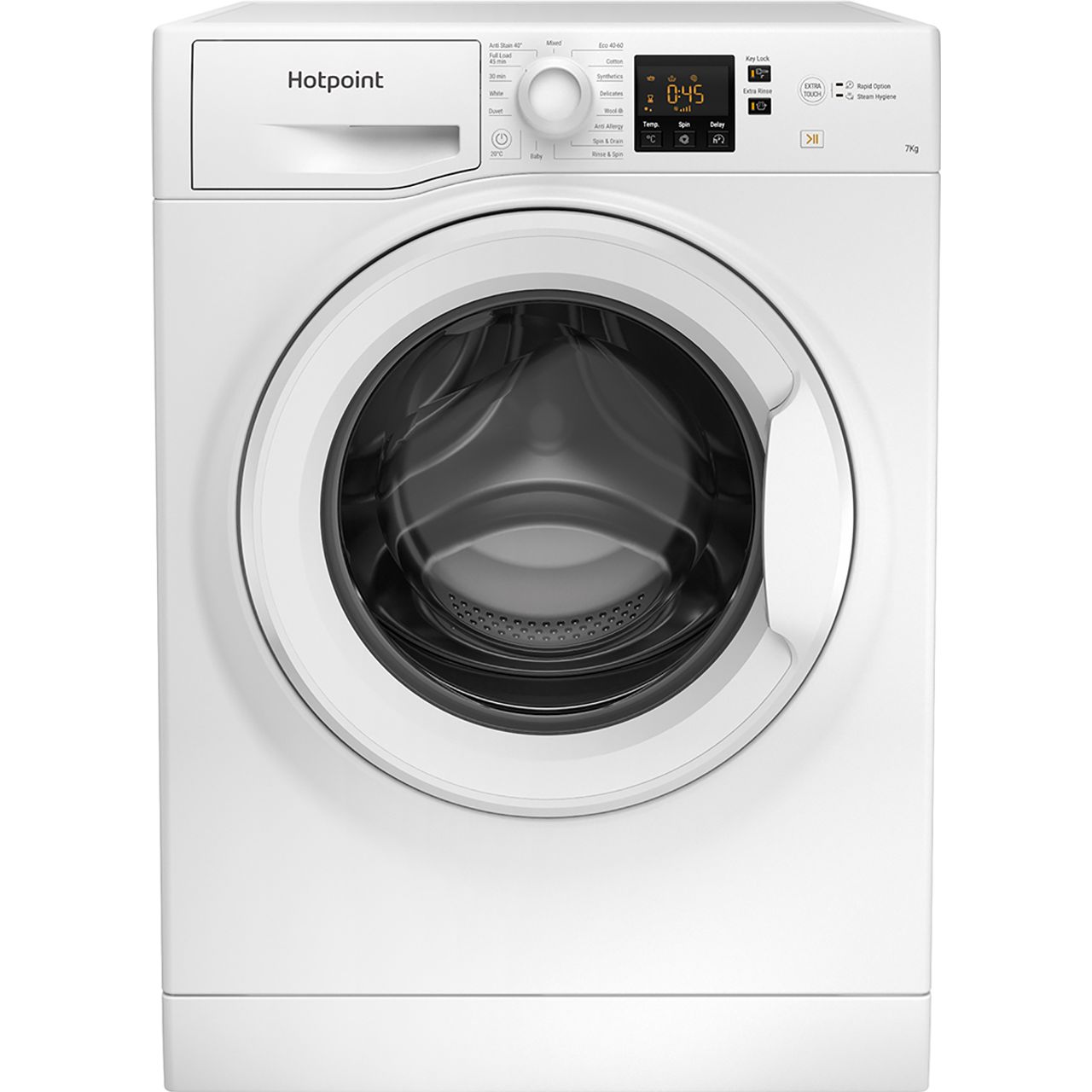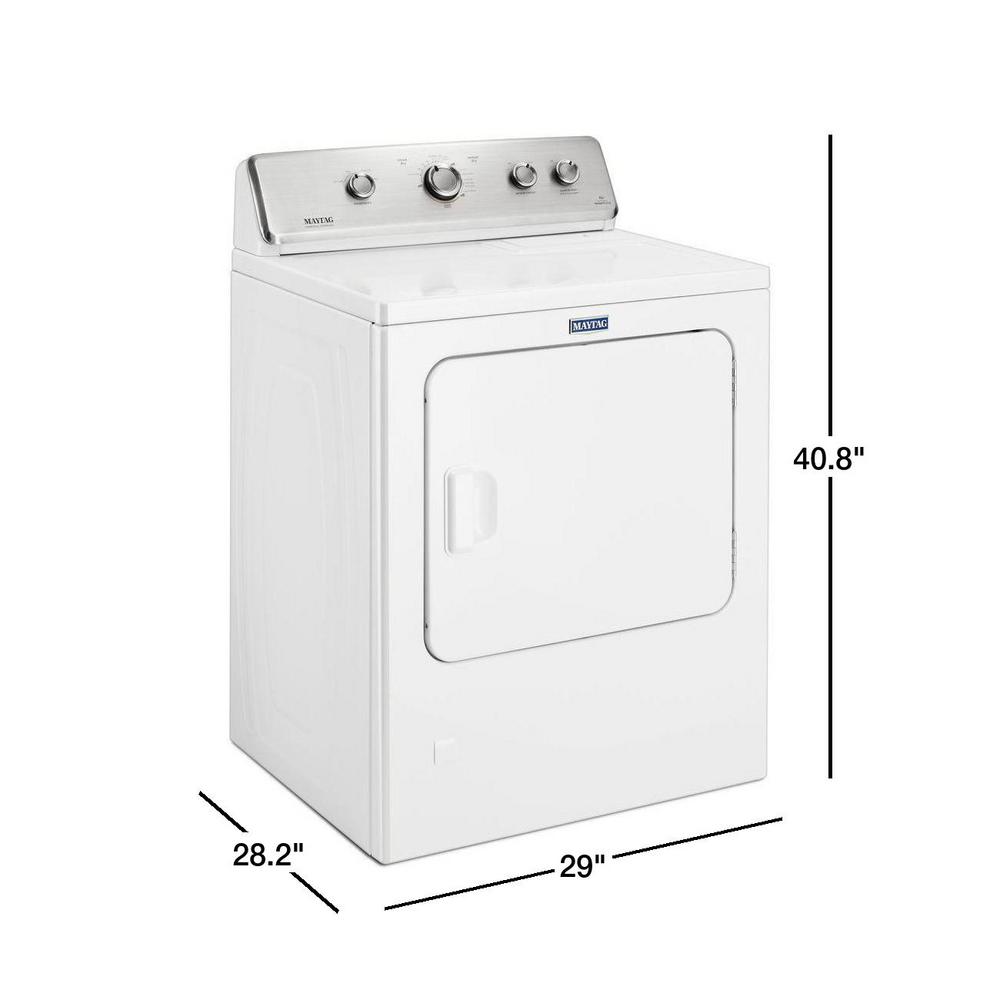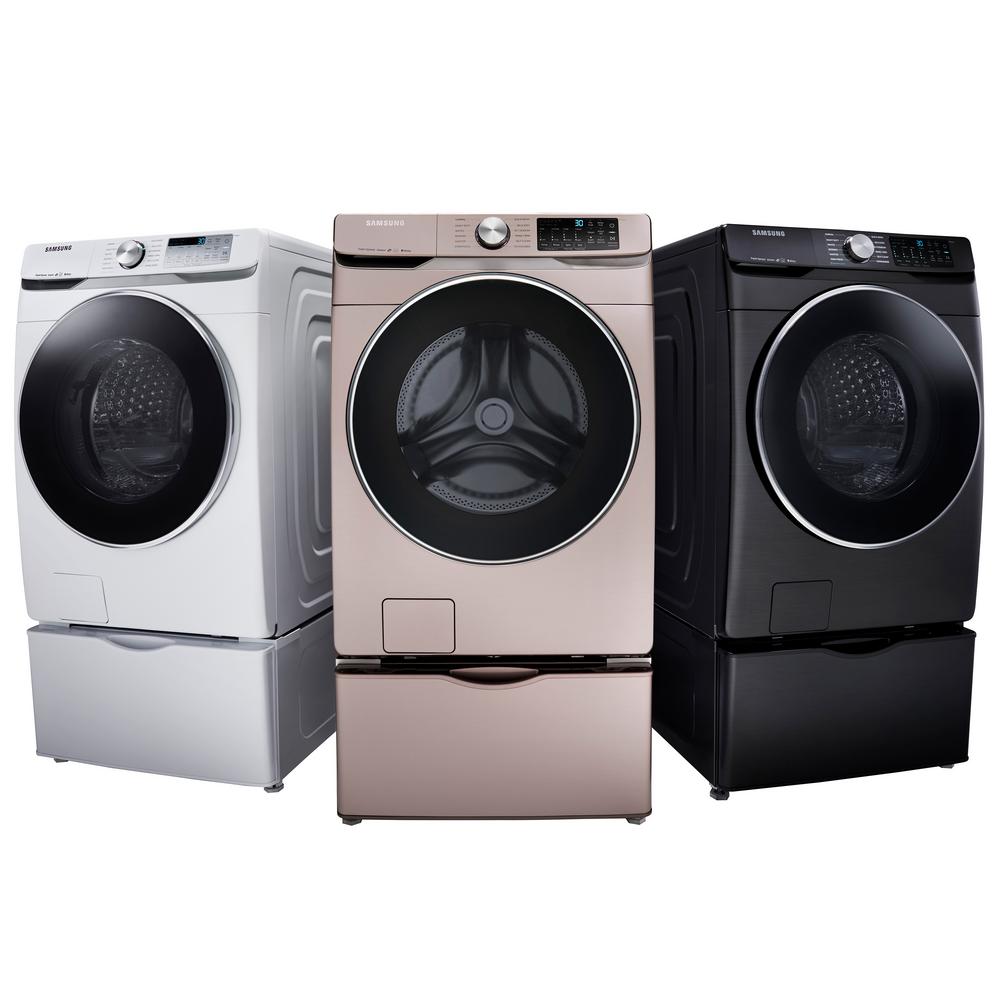Hotpoint NSWM742UWUKN 7Kg Washing Machine with 1400 rpm – White – A+++ Rated
7kg drum capacity – great for medium-sized households. Easily removes 20 of the most common stains. Adds steam at the end of the cycle for intense cleaning. Speedy 30 minute quick wash programme.
Blast through the dirty washing pile with this white Hotpoint washing machine. It has a 7kg drum capacity, making it the ideal addition to any medium-sized household. If you’ve made spontaneous plans and you need a clean blouse fast, the quick wash cycle will have it spotless in just 30 minutes. And, if you’ve been out for a meal but you’ve accidentally dribbled red wine down your white top, just flick on the Anti-Stain setting. This uses higher temperatures and longer rinses than a normal wash would, and drives out up to 20 of the most common stains. Or you can use the Steam Hygiene programme for a more intense wash, because this uses vapour to target fibres and give them a deep clean.
- 7kg drum capacity – great for medium-sized households
- Easily removes 20 of the most common stains
- Adds steam at the end of the cycle for intense cleaning
- Speedy 30 minute quick wash programme
- Dimensions (cm) – H85 x W59.5 x D51.6
Additional information
| Dimensions | (H)85.0 x (W)59.5 x (D)51.6 |
|---|---|
| Manufacturer Warranty | 1 Year |






by Jasmine
I really struggled to find a machine that would fit under my shallow counters but this Hotpoint is perfect. It is so quiet and really straightforward, I wanted to stay away from machines with millions of programmes etc. Washes my clothes super well. I’m really pleased.
by Ben
I cant fault this washing machine , easy to use , ample programs to cover requirements the steam feature is a bonus ! Would recommend highly.
by Jennifer
Hotpoint graphite washer. Very happy with product . 30 and 45 min quick wash cycle , which I love. Quiet. Good spin, washing comes out nearly dry on the 1400 and 1200 spin. Looks lovely and easy to use. Highly recommend.
by Jarka
I’m very satisfied with my new washing machine and it has all my expectations.
by Ashlea
Product is exactly as expected! Also looks good.
by Rich
Amazing machine… I wanted to hang onto the old washer but so glad I went ahead and bought this. A welcome addition to the family household and my kids love it. Super smooth and easy to use this machine will reduce any arguments between you and your loved one!